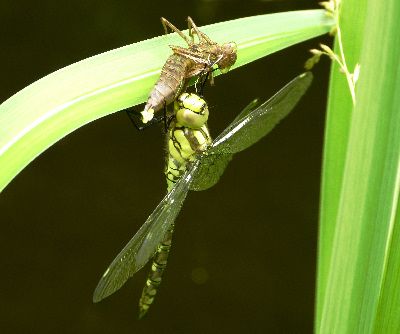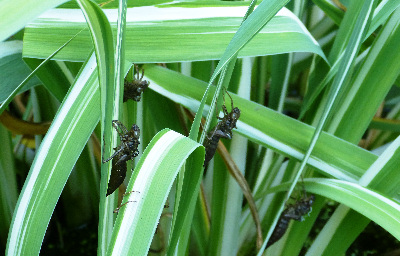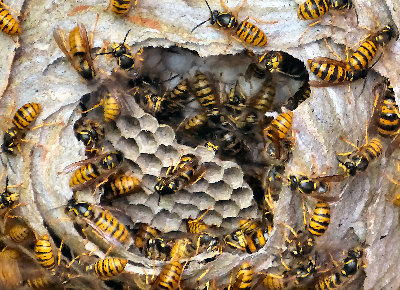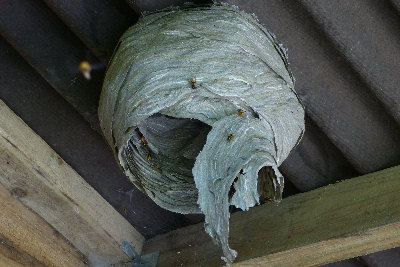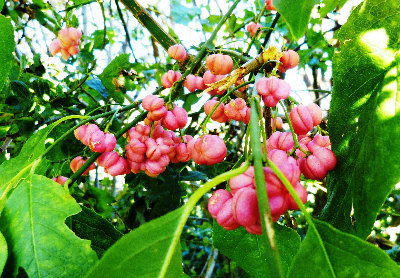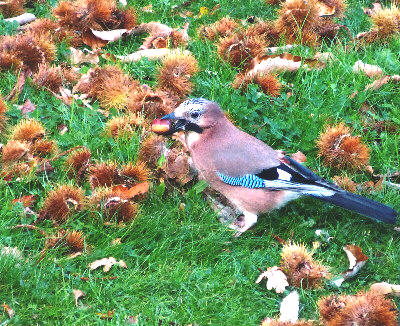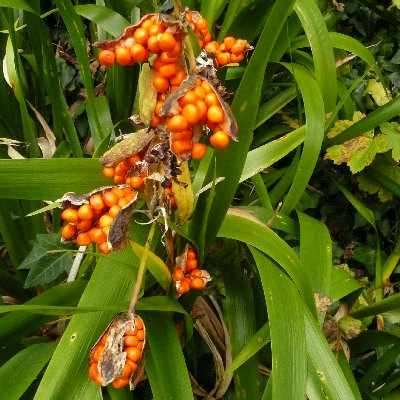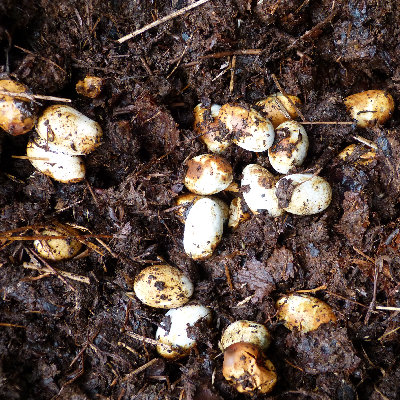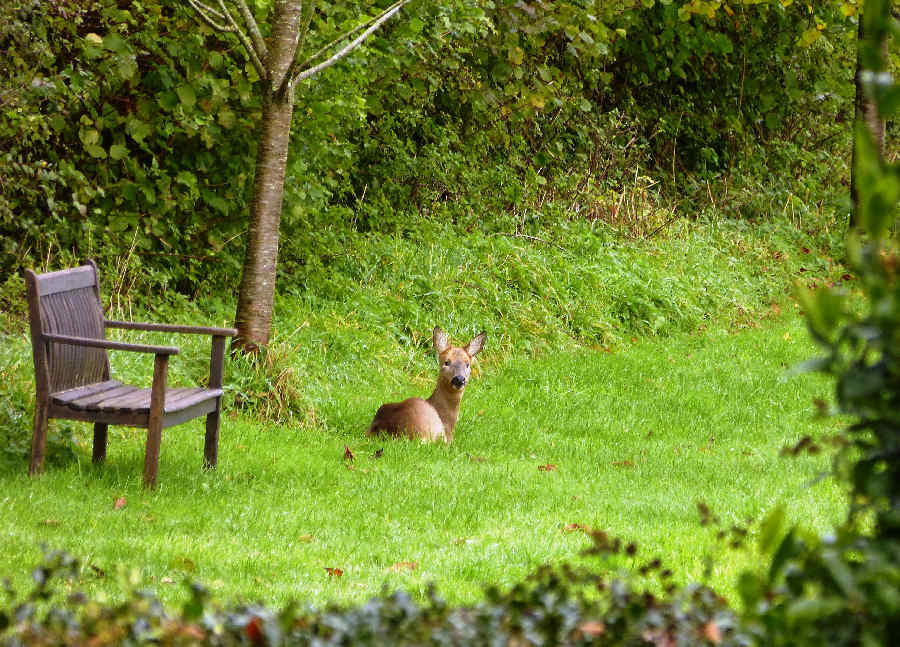|
The diary of a nature lover. At the request of Winsham Web Museum, Liz Earl, undertook to keep a simple 'Nature Diary', recording some of the events and sightings she experienced over a twelve month period starting at the end of 2015. Liz has a lovely garden and small field located at the top of the village, which is often the place where she takes striking photographs of birds, flowers and insects, which are often featured in the Winsham Calendar, and the Parish Web Site. |
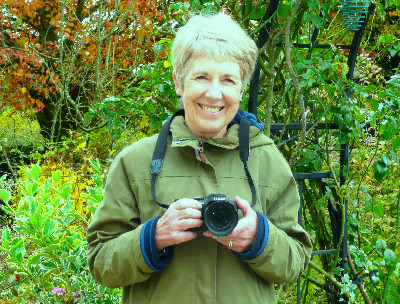 |
|
December 2015
was very mild and damp and rather gloomy.
As a result of the abnormally high temperatures primroses
started flowering, daffodils and comfrey bloomed and rhubarb
looked almost ready to pick.
Phenomenal amounts of rain fell in the north of England
causing widespread flooding.
Remember Carlisle?
The mild, wet and often windy weather continued throughout
January 2016 throwing wildlife into confusion.
Dormice, hedgehogs, certain butterflies and other
hibernators often wake up and once their dormancy is broken
their fat reserves are used up and they do not survive. |
|
30 January 2016
was the RSPB Garden Birdwatch.
These are the birds which
visited our garden that morning:
blackbirds, blue-tits, great-tits, magpies, chaffinches,
nuthatches, dunnocks. robins, long-tailed tits, greenfinches, a
greater spotted woodpecker, a coal-tit, a wood pigeon, a jay and
two pheasants.
|
|
Early March
The weather has turned much colder with a biting north-westerly
and light frost at night.
|
|
Wednesday 16 March
Bluebells are
pushing up 3 or 4 inches and snowdrops are still out.
The goat willows are blooming and the furry blossoms are
visited avidly by early foraging bees.
We spotted 3 different butterflies in our garden today –
brimstone, peacock and small tortoiseshell. |
|
Saturday 2 April
I heard a
chiffchaff today.
This is the ‘heard but not often seen’ bird, an insignificant,
small warbler with a very persistent chiffchaff call.
You have to admire the fact that such a tiny bird
migrates all the way to and from West Africa although some
winter in the Mediterranean (seems like a good idea to me!) and
some, due to our increasingly mild winters, stay all year in the
UK.
Another amazing
migration story is that of the Painted Lady butterfly which
arrives here in April having flown all the way from North Africa
in April. Imagine
such a delicate insect flying so far!
A real Spring day
today. Primroses are
still out, and now we have bluebells, stitchwort,
celandines, dandelions, comfrey and flowering currant.
The goat willows are fully out in leaf and flower.
|
|
15 April
The primroses just
go on and on. This
is a truly exceptional year.
Cowslips are appearing.
Apparently their name is a corruption of early English
‘cow’s leek’ meaning cow’s plant and has nothing to do with
their lips! There is
a lot of blackthorn blossom along the lanes.
I must remember where they are so that I can pick sloes
for gin in the Autumn.
We saw our first
swallows in Winsham yesterday.
I also saw an Orange tip.
This butterfly overwinters as a pupa.
The caterpillars feed on garlic mustard and Lady’s Smock
or Cuckoo flower.
The female has no orange tip and is often mistaken for other
white butterflies. |
|
27 April
Freezing
literally!! Hail and
rain on a keen north-east wind.
We have a female blackcap feeding on our fat balls.
She has a gingery brown cap not a black one.
Some blackcaps are now overwintering in the UK.
This Spring must go
down as the best ever for wild flowers – a profusion of
bluebells, stitchwort, primroses, and wood anemones on the
hedgerow banks and now we have herb Robert,
campion, vetch and cow parsley appearing. |
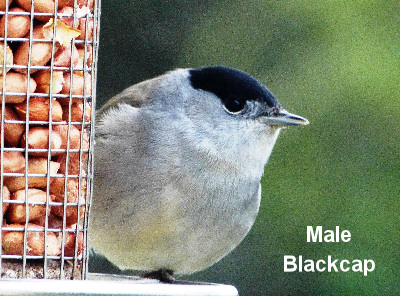 |
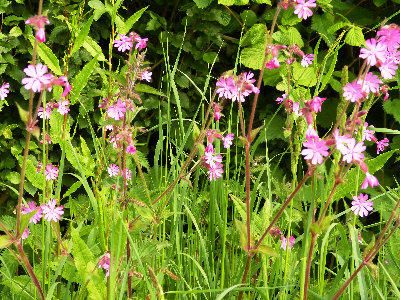 Campion |
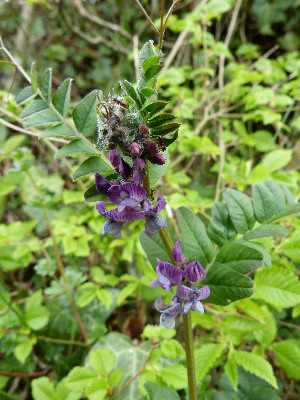 Vetch |
|
5 May
The temperature has
climbed to the high teens.
A yellow hammer is singing his ”Little bit of bread and
no cheese” song somewhere in the field just above Ebben Lane.
We glimpsed a grass snake swimming in our pond.
Is he after the newts?
We have so many
newts but never any frogs.
I believe the newts eat frogspawn but they must be quick
on the draw because we never see any frogspawn either.
The strange thing is that we see frogs in the garden and
they even get into the greenhouse.
During our holiday
in mid-May in the Western Isles we heard the wonderful sound of
cuckoos on Skye. Not
just one cuckoo but several and we even saw one flying over the
moorland. Their call
has been missing from Winsham for 10 years.
It is such a magical sound carrying across the fields and
valleys that one has to forgive the female cuckoo her errant
ways and total lack of maternal responsibility. |
|
June
Do try and go to
the Chard Nature Reserve.
I have lived in Winsham for 11 years and never visited it
until now. The
orchids are beautiful at this time of year.
|
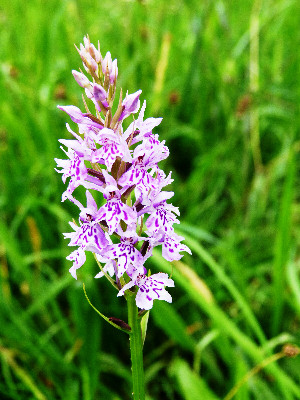 |
|
20 July
Most of the garden
birds fell silent 2 or 3 weeks ago after the frantic activity of
rearing their young.
Some species have managed 2 broods – most of the tits, robins
and blackbirds for example.
Just as well as most of these have a typical lifespan of
only 2 or 3 years.
However, due to the cold Spring this year there will have been
fewer insects. |
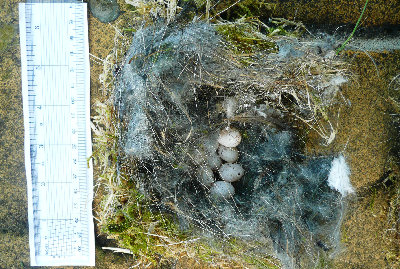 Abandoned Blue-tits nest |
|
3 August
We have had a very
dry July.
The most worrying thing about the summer
so far is the lack of butt
|
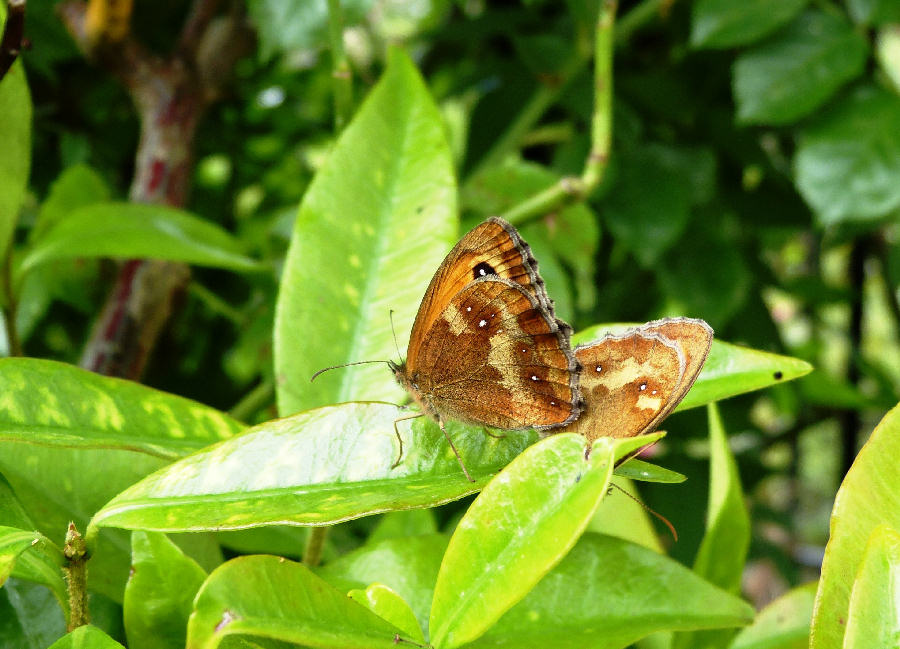 Hedge Brown Butterflies mating |
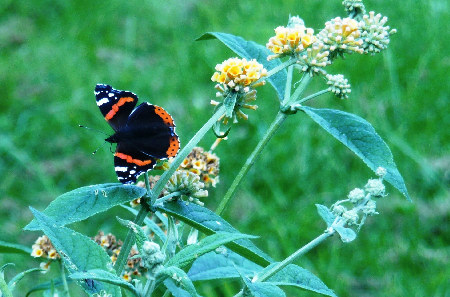 Red Admiral Butterfly |
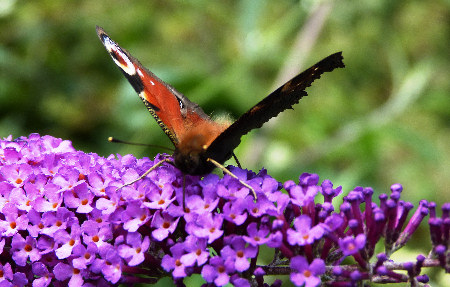 Peacock Butterfly |
|
|
17 October
August was largely
dry and sunny and the dry weather continued into September.
Still very few butterflies and very few wasps.
Are we humans killing off all the wasps?
Yes, they are annoying in late August and September when
they want to share our picnics and our fruit, but we need them.
They are useful pollinators and they build the most
wonderful nests. You
can see (and even hear them) on fencing or sheds scraping and
biting the wood and then masticating it with their saliva.
With this mix they all work together to create a truly
beautiful work of art and a practical nest in which to rear
their young. This
was one they built in our field shelter.
The fruit harvest
has been amazing this year.
Apple and plum trees are laden.
Blackberries and sloes are plentiful and spindle berries
are beautiful with their pink and yellow.
Holly and hawthorn are looking wonderful in the
hedgerows. The
blackbirds are now enjoying rowan and cotoneaster berries.
Later in the winter they will move on to holly, ivy and
mistletoe berries.
The squirrels are getting to the hazel nuts before they are ripe
and the jays are storing acorns and sweet chestnuts for the
winter.
I love the stinking iris (Iris foetidissima) berries, so called because if the dagger-like leaves are crushed they emit an unpleasant smell. The orange berries are fat and exposed all through Autumn and Winter and they brighten up a shady corner in the garden. The flowers are just a dull, washed out beige colour.
The grass snake may
have laid these eggs a bit late in the year and some never
hatched. We
discovered them and also a very small baby snake while turning
over a heap of rotting grass.
11 November
It has been a dry
and calm October. No
gales. The Autumn
colours have been magnificent.
It is lovely to drive from Street Farm down the hill to
Forton under a bronze and golden archway of trees.
Many trees have already shed their leaves but the oaks
retain theirs for quite a bit longer.
We have a wonderful variety of deciduous trees in the
vicinity of Winsham – oak, ash, sycamore, beech, field maple,
goat willow, birch, poplar, hawthorn, blackthorn, hazel, elder.
This cheeky young
deer has made itself at home in our field and when not resting
is nibbling our apple trees.
|
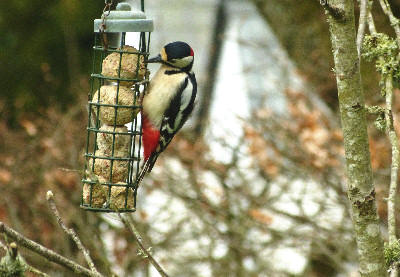
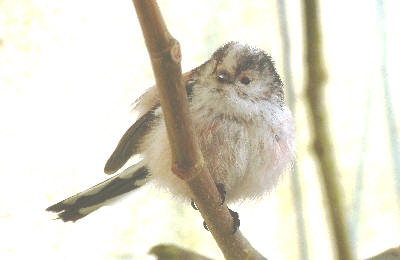
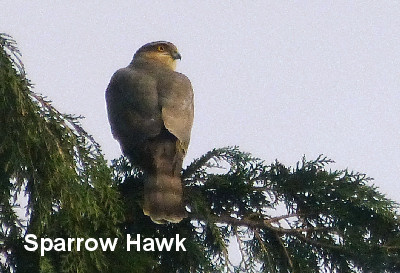
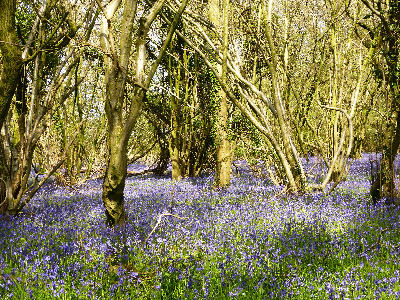
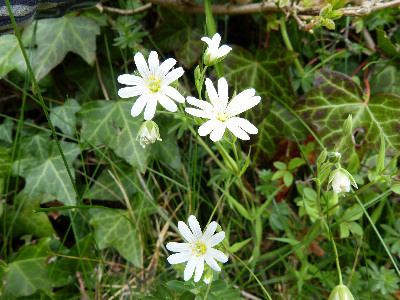
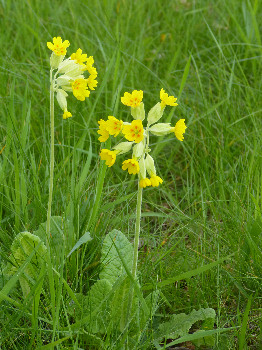
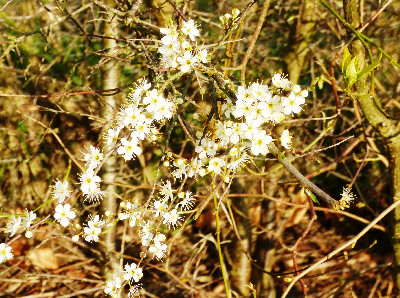
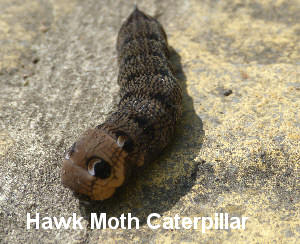 reflies
and bees compared with last year.
reflies
and bees compared with last year.